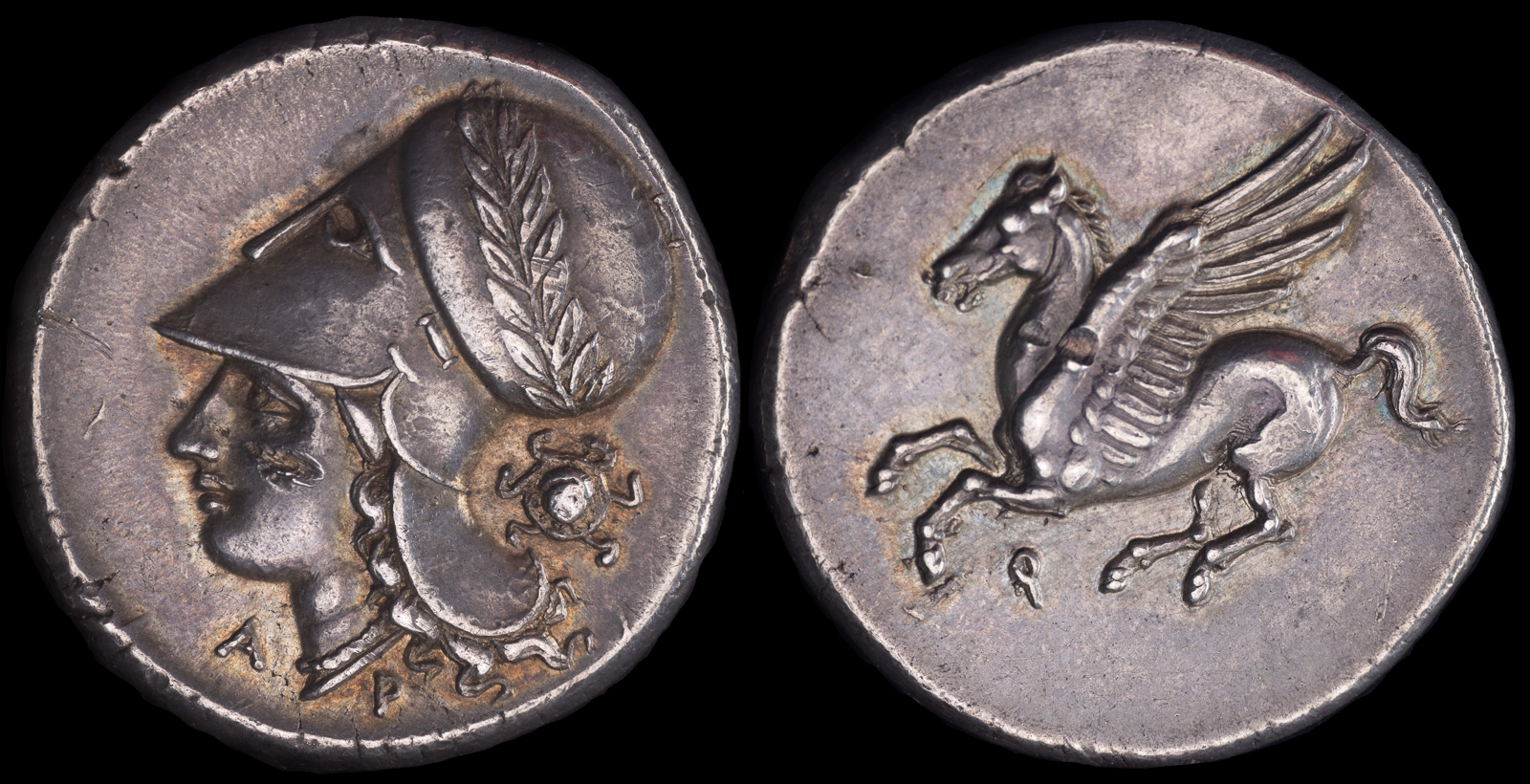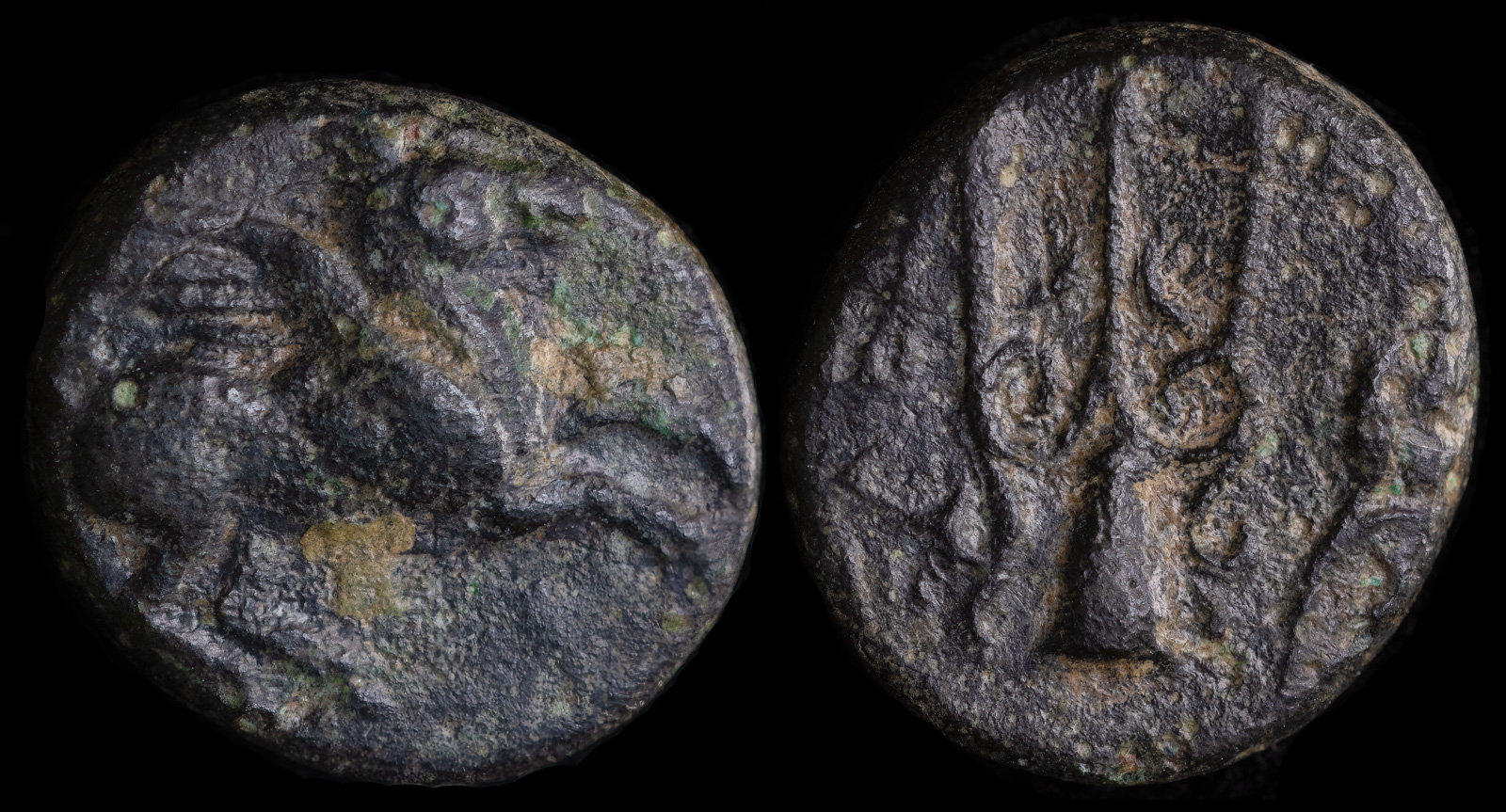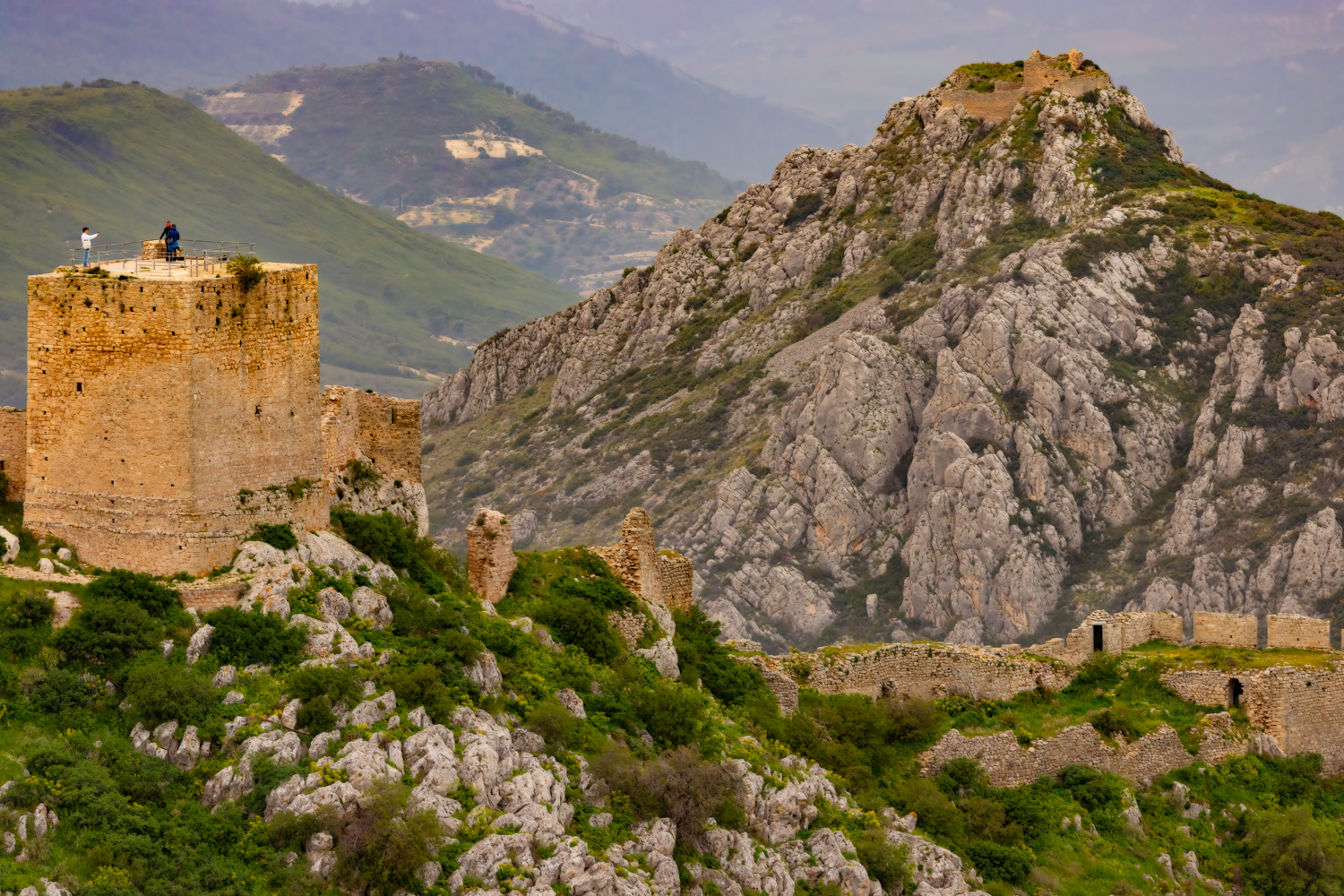
Corinth, Peloponnesos
ca 350-306 BCE
AR Stater 22mm 8.59g
Pegasos flying left /
Helmeted head of Athena left, helmet decorated with laurel wreath; A P flanking neck truncation, aegis behind
Ravel Period V, 1009; Pegasi 427; BCD Corinth –; HGC 4, 1848; Cf. CNG 112 lot 207 (same obv + rev dies)

Corinth Corinthia
ca. 248 – 243 BCE
Ae 15.0mm, 2.8gms
Obv: Laureate head of Apollo right
Rev: Zeus advancing right holding thunderbolt and filleted transverse scepter; torch behind
BCD 305, SNG Cop. 164
Corinth was among the most well-known and powerful cities of ancient Greece. Standing in the way between the Peloponnese and the rest of Greece, Corinth was always a major player. During the Peloponnesian War, they sided with Sparta against Athens, but as with most Greek cities their alliances changed over time.
In 337 BCE, Philip II created the League of Corinth to, in effect, marshal all of the Greek cities under his command. Each city had a number of delegates in proportion to its power. Decisions by the League included declaring war on Persia (which Alexander would later make use of) and agreeing to the destruction of Thebes.
The League meetings took place in Corinth (naturally) and Philip II was initially voted its head. The agreement stated that the hegemony would pass to his heirs, so after Philip’s murder the following year, Alexander took over. The League of Corinth was disbanded shortly after Alexander died.
The majority of Corinthian coins depict Pegasos. This was due to one of their first kings, Bellerophon, who per legend tamed it. Many of Corinth’s colonies also depict Pegasos.

Corinthia. Corinth
circa 300 BCE
Æ 13mm, 1,93g
Pegasos flying r.
R/ Trident head downwards; K to l., ivy leaf (?) to r.
Cf. BCD Corinth 217ff
I had the opportunity to visit the ruins of Corinth during my trip to Greece. Here are several photos I took.





Aletes, first Bacchiad king of Corinth, takes control of the city from the Sisyphids.
Telestes, the last Bacchiad king of Corinth, is killed.
Syracuse is founded by settlers from Corinth.
Foundation of Leukas as a colony of Corinth.
A channel that separates the island from the mainland is constructed by Corinthian settlers at Leukas to aid in navigation.
Death of the tyrant Kypselos in Corinth. He is succeeded by his son Periander.
Anaktorion founded by settlers from Corinth.
Potidaia is founded by settlers from Corinth.
Death of the tyrant Periander of Corinth, who had built the city into a major trading center. After Periander supposedly defiles the corpse of his wife, his son Lykophron departs for Korkyra. When Periander offers him the rule of Corinth, the inhabitants of Korkyra kill Lykophron rather than let him depart. Periander dies of grief.
Death of Psammetichos, the last of the Kypselid tyrants of Corinth.
The Isthmian Games are established in Corinth.
Construction of the Temple of Apollo at Corinth.
The Battle of Thermopylae. Soldiers from Sparta, Mantinea, Tegea, Orchomenos (Arkadia), Corinth, Phlious, Thespiai, Phokis, Opuntian Lokris, and other cities are overrun by the Persians at a huge cost.
August 7
August 27
Corinth obtains control over Anaktorion through fraud after the city had been joinly occupied by Corinth and Korkyra.
429 BCE
The Spartans under Agesilaos II attack and Persia. Artaxerxes II retaliates by bribing Corinth, Thebes, and Athens to make war on Sparta.
July
Sparta and their allies, including Sikyon and Tegea, defeat Athens and their allies at the Battle of Nemea. On Athens side are Thebes, Lokris Opuntii, and Corinth. With Sparta are Halieis, Sikyon, Epidauros, Troizen, and Hermione. Phlious remains neutral. Pellene fights on the side of Sparta against Thespiai.
Pharnabazos travels to Corinth and provides them with funds to rebuild their fleet, then he provides Athens the funds to rebuild their long walls.
A union between Argos and Corinth is established.
Due to the Peace of Antalkidas, the union between Corinth and Argos is broken under pressure from Sparta.
Polyperchon controls much of the Peloponnese, including Corinth and Sikyon.
Demetrios Poliorketes re-establishes the Corinthian League while at Athens.
Demetrios Poliorketes seizes Epidauros, Sikyon, Corinth, Bura, Argos, and Orchomenos.
Antigonos II regains control over Corinth.
Aratos of Sikyon takes Acrocorinth. The inhabitants of Corinth rise up against Antigonos II.
Romans are allowed to take part in the Isthmian Games of Corinth.
197 BCE
The Roman Titus Quinctius Flamininus declares the freedom of all Greek states from Macedon at the Isthmian Games in Corinth. This includes Histaia.
Julius Caesar refounds Corinth as a Roman colony, Colonia Laus Iulia Corinthiensis. Dyme is also refounded as a colony.
Corinth becomes the capital of the Roman province of Achaia under Augustus.
The Apostle Paul visits Corinth and stays for 18 months during his second missionary journey, preaching and establishing a Christian community. He later writes at least two letters (First and Second Corinthians) to the community, which become part of the New Testament.
Emperor Nero visits Corinth and begins construction on a canal across the Isthmus of Corinth, intending to connect the Aegean and Ionian Seas. The project is abandoned after Nero’s death in 68 CE.
Emperor Domitian strengthens Corinth’s defenses and invests in infrastructure, enhancing the city’s prosperity and its standing within the Roman Empire.
Corinth suffers a major earthquake that causes extensive damage to the city.
April 2
The author of this page arrives at Corinth and photographs it.
April 3
The author of this page tours Corinth and Acrocorinth, then heads to Delphi.